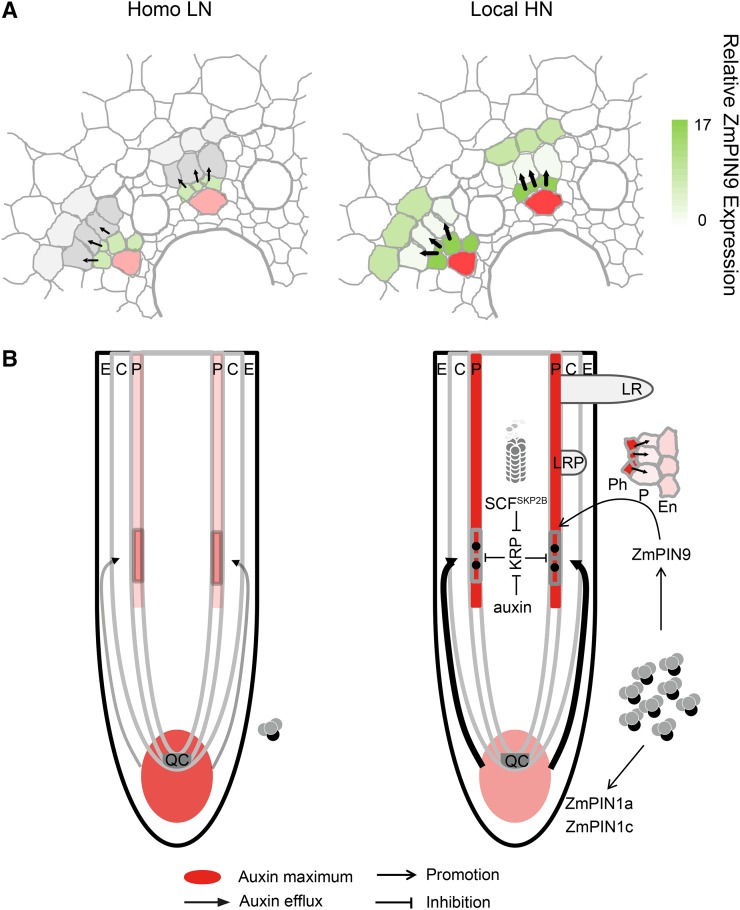Figure 6.
Model of the molecular mechanisms underlying local high nitrate (local HN)-induced lateral root initiation in shoot-borne roots of maize. A, Schematic illustration of cell type-specific relative ZmPIN9 expression (grey to green gradient). Auxin maxima in phloem poles have been highlighted (red). Black arrows indicate suggested net auxin flux directions. Homo LN, Homogeneous low nitrate. B, At low nitrate concentrations, auxin accumulates in the root apical meristem (Fig. 3, B and F). Low auxin efflux capacity fails to induce basipetal auxin transport. In the presence of local HN, basipetal auxin transport (thick arrows) is facilitated by ZmPIN1a and ZmPIN1c (Fig. 3, A and C). Increased auxin in the lateral root initiation zone is transported into competent pericycle cells by ZmPIN9 (Figs. 3C, 4B, and 5A). Lateral root initiation is mediated by either auxin directly or the auxin-mediated ubiquitin-dependent protein degradation machinery (SCFSKP2B complex; Supplemental Fig. S3), either of which repress KRPs to facilitate for cell cycle activation (Fig. 2). C, Cortex; E, epidermis; En, endodermis; LR, lateral root; LRP, lateral root primordium; P, pericycle; Ph, phloem; QC, quiescent center.

